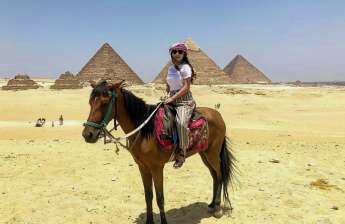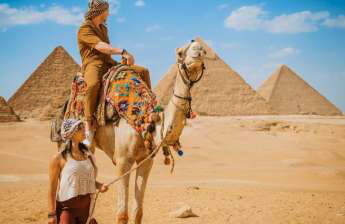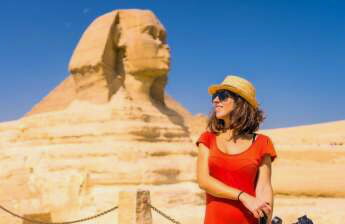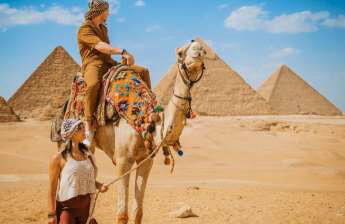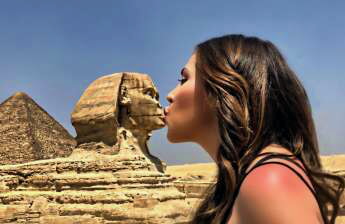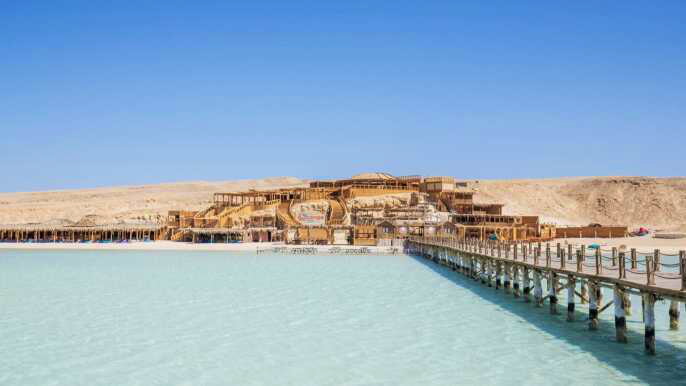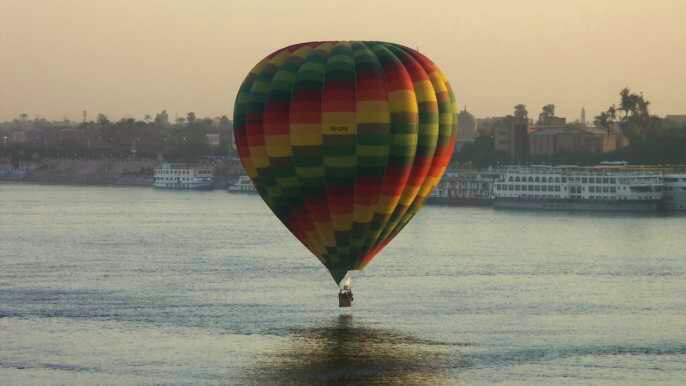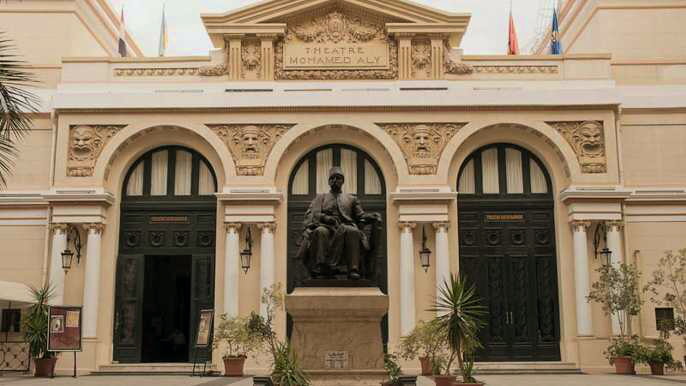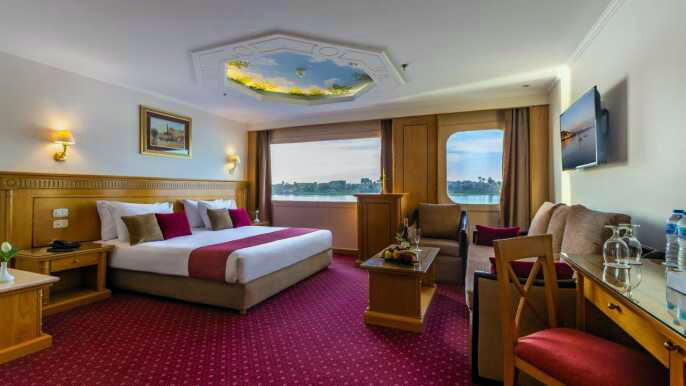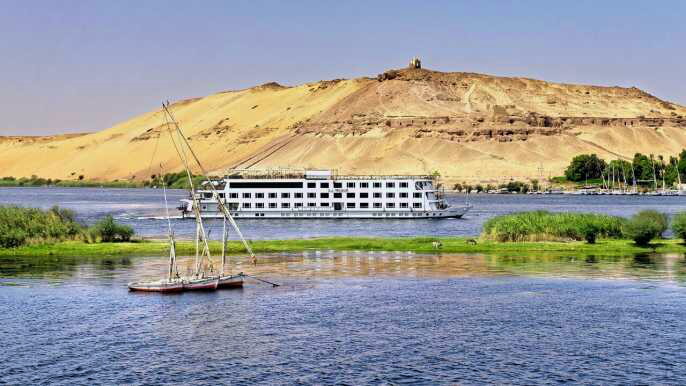Whether you're visiting Cairo on a family holiday, on business, or on a trip, there are plenty of places you should visit while you're there. The city is a sprawling metropolis, and there are several iconic attractions to see.
Pyramids of Giza
Seeing the pyramids of Giza is a unique experience that is worth your while. They are a symbol of Egypt's Pharaonic rulers and continue to fascinate visitors worldwide. They are also among the world's oldest surviving man-made structures.
They have been excavated to reveal the labourers' districts, small tombs of workers, workshops and storage areas. Mud sealings were discovered in some of these sites, which date back to the late 4th dynasty.
It is important to carry sunscreen and water with you. It is also a good idea to wear a hat and long sleeves during the summer months.
If you are planning to visit the pyramids, you should arrive early to avoid the swarm of tourists. If you arrive too late, you may be stranded at the entrance.
Besides the pyramids of Giza, you should also check out the Giza Plateau, where you will find the Grand Egyptian Museum. It is the largest museum in the world devoted to the one civilization. It is located on the Giza Plateau, just 2.5 kilometers northwest of the main entrance to the pyramids complex.
Another interesting site to see is the Solar Boat. This vessel was built in 2500 BC and was used by king Ra to transport himself to the heavens. It is currently located inside the Solar Boat Museum, but it will soon move to the Great Egyptian Museum.
The pyramids of Giza are the first of the Seven Wonders of the World. Visiting these monuments is like traveling back in time.
Coptic Cairo
Located in the Old City of Cairo, Coptic Cairo is one of the most important neighborhoods in Egypt. This area contains one of the largest indigenous Christian communities in the Middle East. It also contains the remains of an ancient fortress called Babylon, which was built by the Romans in the 2nd century.
The ancient fortress is also home to one of the oldest synagogues in Egypt, the Ben Ezra Synagogue. It is located near the site where the baby Moses was found.
The Hanging Church is another ancient landmark in Coptic Cairo. It is located southwest of the Coptic Museum. The Hanging Church was first constructed in the 4th century. It was substantially rebuilt in the 9th century. The roof of the Hanging Church is shaped like the ark of Noah.
The interior of the Coptic Church is quite impressive. It is decorated with inlaid wood and ivory templon. The interior features intricate geometric patterns. The church is dedicated to Sergius and Bacchus. There are 110 different icons inside the church.
The Coptic Museum is home to the world's largest collection of Coptic art. It has more than 1,600 pieces. The museum also hosts a textile collection and a pottery exhibit. The museum is open daily from 9 am to 4:30 pm. The museum has book stands that display books with Egyptian and Arab history. It also has an icon display.

Salah El-Din Citadel
Located on a spur of limestone, the Salah El Din Citadel is one of Cairo's most famous landmarks. The fortress is a great place to see Egyptian history. During the Ayyubid dynasty, it served as the seat of government in Egypt. The fortress was also used during the Mamluks and Ottomans.
There are two main sections in the fortress. The southern section is higher and offers great views of Cairo. The Mamluk mosque is located close to the Mohammed Ali mosque. The Islamic architecture of the mosque is beautiful. It has a courtyard and a circular waxed wood stage.
The southwestern section is also known as the royal city. This section of the fortress is the most attractive. Visitors can get impressive views of Cairo and the Pyramids of Giza without the sands moving.
The Military Museum is the most visited area in the fortress. It features exhibits that show the history of Egyptian military forces during the Islamic era. The museum is open all day. It is included in the general entrance fee to the Citadel. The museum contains weapons and uniforms from Egypt's long history.
The National Military Museum is a great place to learn about the military history of Egypt. The museum's exhibition halls display weapons and uniforms used by the Egyptian police and military during the past several thousand years. It is also home to a small royal carriage museum that shows the carriages used by the royal family of Muhammad Ali.
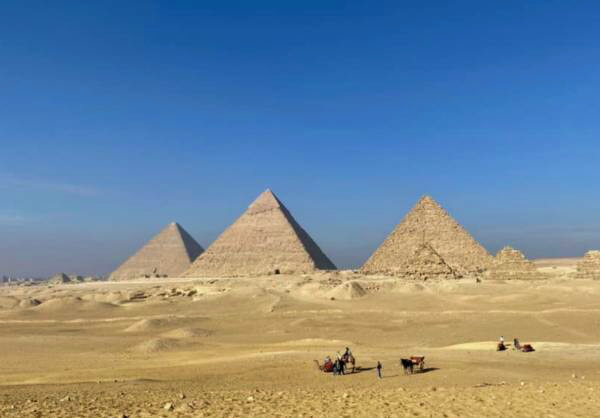
Khan El-Khalili
Whether you are looking for an adventure or an art trip, Khan El-Khalili is a great place to visit in Cairo. This ancient neighborhood is home to shops selling traditional Egyptian galabeya, musical instruments and more. It is also a good place to buy souvenirs.
The famous Khan Al-Khalili bazaar is located in the Islamic part of Cairo. It's a bustling market full of all kinds of goods. You can find the best spices and perfumes here. You can also find gold and silver jewellery here.
You can also find souvenirs such as carved wooden boxes, prayer beads and incense burners. These items are ideal for decoration and storage.
You can also buy belly dancing outfits here. This is a popular souvenir among tourists.
In addition to shopping, you can also find cafes and restaurants in the area. One of these is the famous Cafe El-Fishawy, which was established in 1769 and is famous for its tea and Shisha. This cafe has been featured in several movies.
If you want to buy souvenirs, you should try to bargain for them. The vendors are always ready to help. The prices are often lower than the price at the Sharia Khayamiya market, so you can get a better deal. You can also find various antiques here.
The famous souk is a good place to see Cairo's vibrant atmosphere. If you are not sure how to navigate this souk, it is best to hire a guide.
City of the Dead
Unlike most of Cairo, the City of the Dead has no paved streets and is a silent oasis. Its houses are built in small rooms, with tomb enclosures inside. Some of them are centuries old. The neighbourhood also hosts vegetable markets and shops.
The City of the Dead stretches for four miles along the eastern edge of the historic city. It was formerly a burial ground for Arab conquests. Each tribe developed its own necropolis. It is now occupied by 500,000 people.
A few areas of dense urban housing have emerged within the boundaries of the historic necropolis. These installations are tolerated as a testament to Egypt's housing crisis. But there are others that are heartbreakingly neglected.
Some of the residents have lived in the neighbourhood for generations. Some have taken up residence in old mausoleums. Other inhabitants have used graves for drug dealing.
The neighbourhood has been home to visual artists and musicians. Today, products produced in the impoverished neighbourhood are sold online. But, it still has a stigma as the poorest ghetto in Egypt. It has been nicknamed "Cairo's City of Garbage" and the "City of the Dead".
It is believed that more than one million people live in the neighbourhood. Some of them share accommodation with the graves of their relatives. Many of these people live below the poverty line. They earn a few Egyptian pounds a day.
Coptic Museum
Founded in 1908, the Coptic Museum is one of the most popular tourist attractions in Cairo. The Museum displays the best Egyptian art in the world, including the largest collection of Coptic Christian art. The Museum is also home to the oldest book of psalms in the world.
Visitors can explore the museum's three floors, each filled with a variety of exhibits. They will find a wide range of historical artifacts, from a luxurious silk dress to a bird's-eye view of the Nile River.
The first floor of the Coptic Museum is divided into nine exhibition halls. The centerpiece is the carved painted capital with curving ornaments of leaves. The centerpiece was originally a Greek or Roman structure, but the Copts later borrowed the design.
Other exhibits include paintings, religious objects, and stone carvings. There are also examples of ancient Egyptian, Byzantine, and Roman civilizations. The Museum features a wide array of Egyptian artifacts, including ancient ankhs, tombs, and belts.
Visitors can also enjoy the museum's beautiful gardens. The courtyard is a popular place for picnicking. The walls are adorned with artwork, including geometric patterns and stained glass.
The Coptic Museum is open daily from 9 AM to 4:30 PM. There are several souvenir stands at the entrance. Tickets cost 100 LE for adults. A half-hour tour is enough to see the main exhibits. If you plan to photograph the exhibits, you will need a camera ticket.


